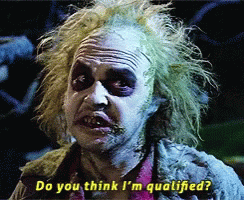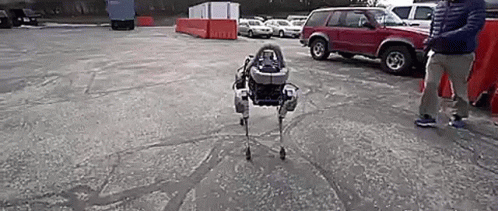If you haven’t kept up with us on Discord, we have completed the next set of 1879 products, which will be the Saurids Sourcebook and Maps of London. When I say completed, I mean they are totally done; writing, layout, art, the whole kit and caboodle. We will be doing a Kickstarter in the near future to fund the initial run, and more information will be released on that as it gets closer (there are some managerial things that I won’t go into detail on here that prevent us from running the campaign as soon as I would like, but it will be coming soon). This is the first time we’ve had a product completed prior to running a campaign, and we will have a limited number of samples at GenCon this year, so if you’re there, you’ll get a unique opportunity to check them out prior to the campaign (and maybe get a chance to pick up an early copy – again, more details on that as we get closer). Even if you’re not there, we’ll be providing plenty of pictures with the campaign to show off what you’ll be getting.
Given that the work on them is done, it’s high time I started up another string of blog posts to promote them and discuss what’s coming. Before I get into anything on the world building or game mechanics side of things, however, I have a couple of things I want to discuss from a subject on the production side, and that is regarding the use of AI art.

Yes, we are making use of some AI art in the end product. I realize that may have some controversial feelings for some people, but we are being up front and honest about that fact, and before you go rushing off to find your torches and pitchforks, I want to go into a bit more detail as to how we’re using it, and maybe put some of those fears at ease. I will also say from the outset, this is a complex and nuanced subject, so it will be broken up into several posts to try and cover things in sufficient detail. If you have questions or comments on anything I write in these, by all means please feel free to discuss as they’re posted per usual, but do bear in mind there’s going to be more coming, so if a particular item isn’t immediately answered, it could very likely be addressed in a later post.
First, to give a bit of background for myself and where I’m speaking from on the subject. I don’t consider myself an artist, at least not a visual one; I’d say I have better than average proficiency with photoshop, and I can draw schematics and blueprints with no problem, but you ask me to do anything organic and I’m out of my depth. I do, however, have quite a bit of proficiency from the tech side of things. Aside from currently being the main IT contact for the company and IT being my day job, when I was initially going to college I was originally planning to study AI specifically. I ended up not having a practical job market available for what applications I wanted to do into at the time and shifted focus to networking and VoIP (if I were about ten years younger, I may not have had that problem), but I did study enough where I’d say I have a background on the subject and have maintained a better than general knowledge on it.

My background is particularly significant not only because I’m writing this article, but because I personally have done the work with the AI prompts for the pieces we’re using, so I have an understanding of how the AI pulls its data to generate images, and certain behaviors I want to use and ones to avoid. Given how open the possibilities are with AI, the latter is very often more important than the former, so for this article, I’m going to focus more on the things we’re not doing to avoid undesired results.
One to get out of the way right out of the gate; we are not using AI to eliminate human artists. I’ve done a quick count on the Saurids Sourcebook, and I can give you some actual solid numbers to get into that. By my count, the book has a grand total of 88 pieces of art (this does include the animations and page borders, if anyone goes to do a follow up count after me when they get the book). Of those, eight pieces employ use of AI. Of those eight pieces, four required significant modifications to correct deficiencies with the AI or to achieve our desired aesthetic, and four are left largely unmodified other than cropping to fit the available space. So only 10% of the book’s art involves AI in any way, and only 5% was done without significant human intervention.

I will also note that every single piece of AI art used was put in only after we had completed the initial layout of the text and inserted the human generated art, using the AI art just to fill in the remaining white space to even out a page. While this isn’t the only means by which we’ll use AI in the future, we most definitely are keeping focus on human generated art, particularly since talking to a human just works better for getting a desired aesthetic – though I’ll talk more about that in a later post.
Since I am the one who has controlled the prompts used to generate what art we have used so far, I can also give you some information on that process and what methods I’ve employed to avoid ethical problems there. Of the art that is getting published in this book, none of it makes use of any sort of seed image; everything has been purely from text prompt. There are a few pieces I’ve made that may get published later that did use seed images, but only pieces that FASA has full ownership of. The only capacity I’ve used any images from online were to make use of the Describe tool, getting the AI to tell me what patterns it sees in an image so that I can use those key words to craft a new prompt to enter. For example, for whatever reason, the wanted the phrase “Humanoid lizard creature esquil” included to generate pictures even somewhat close to Saurids, and the only way I got that term is from having it describe existing pictures of Saurids – no idea why it works, but it does.
I’ve also made sure in the prompts I’ve used to not mention any particular artist by name – even though the courts have established an artist’s style can’t be copyrighted, I still don’t want to emulate anything specific to someone unless we’re paying them. I have done some experimentation with named styles, but those have only been to test out the AI’s capabilities and see where I can push certain elements, and none of those images are going to be published. You may have also seen me mention in Discord testing using named celebrities to generate images of boojums – again, those are experiments, not going to be published in anywhere. Most of the styles I’ve used just describe a general medium like “oil painting” or “vintage photograph”. I use the former mostly because it generates images with very soft lines which I can more easily stretch and clone stamp with photoshop and just get it to blend together, and the latter because it’s something that really couldn’t be generated by a human in the first place.

I think this first post has stretched on long enough, and I’ve hit on the major points I wanted to address here. As mentioned before, there will be more to come on the subject, so keep an eye out for that. If you’ve got questions or comments, feel free to leave them below or on Discord, and we’ll see you next week!
